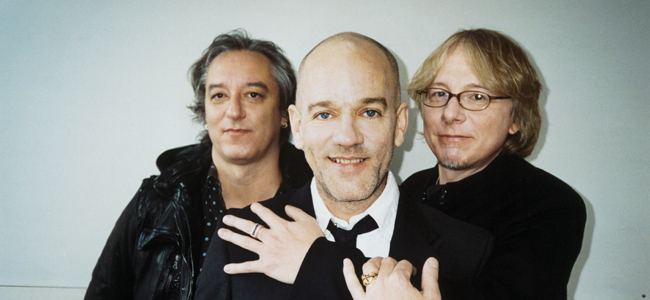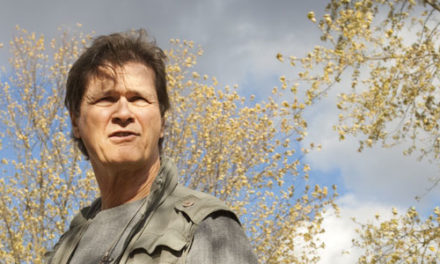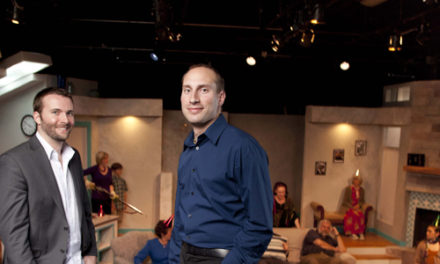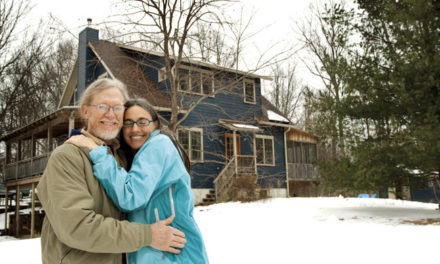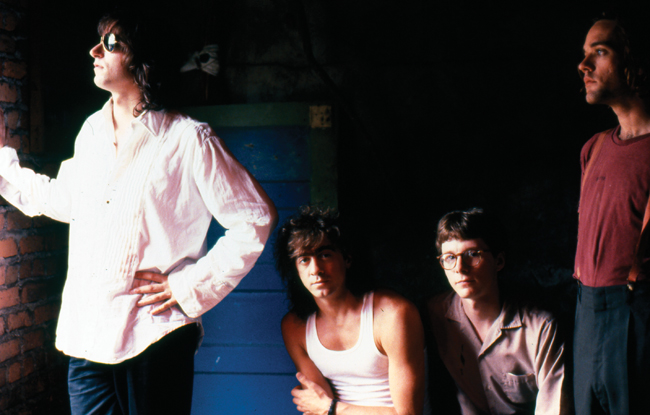
R.E.M. cultivated an air of mystery and photographs of the band played to that mystique. (l-r) Peter Buck, Bill Berry, Mike Mills, and Michael Stipe. © Sandra-Lee Phipps
BY DAVID BRENT JOHNSON
Imagine that it’s 1963, and you’ve just been told that the young Beatles are coming to Bloomington to record their next album, or that a boyish Bob Dylan will be setting up camp in this Midwestern university town to lay down an early masterpiece. For one generation of young Bloomingtonians, this sort of story came to pass in the spring of 1986, when the rock band R.E.M. — vocalist Michael Stipe, guitarist Peter Buck, bassist Mike Mills, and drummer Bill Berry — walked among us for a few weeks as they made Lifes Rich Pageant, the album that ultimately served as a bridge for the band’s journey from college-radio icons to superstars. In doing so, they also left an indelible stamp on a number of students and town residents who encountered them — several of whom went on to become artists and musicians inspired by a rock band’s example of aesthetic dedication, independence, and integrity.
I was a 20-year-old English major at Indiana University, at the zenith of my R.E.M. fandom, when a friend in my creative writing class casually informed me of the word-of-mouth news. (There was, of course, no Twitter, no Facebook, no email, or cell phones in 1986, and so people around town learned the news only gradually.) I went home and told my girlfriend that I’d just heard that R.E.M., the ultimate purveyors of Southern-mystic pop, would soon be arriving in town to make a new record.
My girlfriend was unimpressed. “So what?” she said, blowing smoke out an open window. It was April, and we could feel the air on our arms again. “They’re just people, for God’s sake.”
Three days later she came charging up the stairs and burst into my apartment. “I just saw Michael Stipe in Bloomingfoods!” she gasped.
Video
Recorded while in Bloomington, 1986.


